10 Essential Content Marketing Metrics for Ultimate Success 2024

Here are 10 important statistics that highlight the significance of content marketing metrics for achieving ultimate success in 2024:
Example of me using AtOnce's AI content generator to write high-quality content: blog posts, emails & ads:

- Content marketing generates three times as many leads as traditional marketing methods.
- Companies that prioritize content marketing experience six times higher conversion rates.
- Over 70% of marketers actively invest in content marketing strategies.
- Content marketing costs 62% less than traditional marketing and generates three times as many leads.
- Marketers who consistently publish quality content see a 45% increase in traffic to their websites.
- Content marketing generates three times as many leads as outbound marketing, but costs 62% less.
- More than 60% of consumers feel more positive about a brand after consuming content from it.
- Content marketing is projected to be a $412 billion industry by 2021.
- Companies that blog receive 97% more links to their website.
- Content marketing has a conversion rate six times higher than other methods.
1. Organic Traffic
.png)
Organic traffic is a crucial metric to measure the success of your content marketing efforts.
It refers to the number of visitors who find your website through search engine results pages (SERPs) without any paid advertising.
By tracking organic traffic, you can assess the effectiveness of your SEO strategies and content optimization techniques.
To improve organic traffic, focus on creating high-quality, relevant content that aligns with user intent and incorporates targeted keywords.
I use AtOnce's AI SEO optimizer to rank higher on Google without wasting hours on research:

How to Increase Organic Traffic:
To increase organic traffic, optimize your website for search engines by:
Here's an example where I've used AtOnce's AI SEO writer to generate high-quality articles that actually rank in Google:
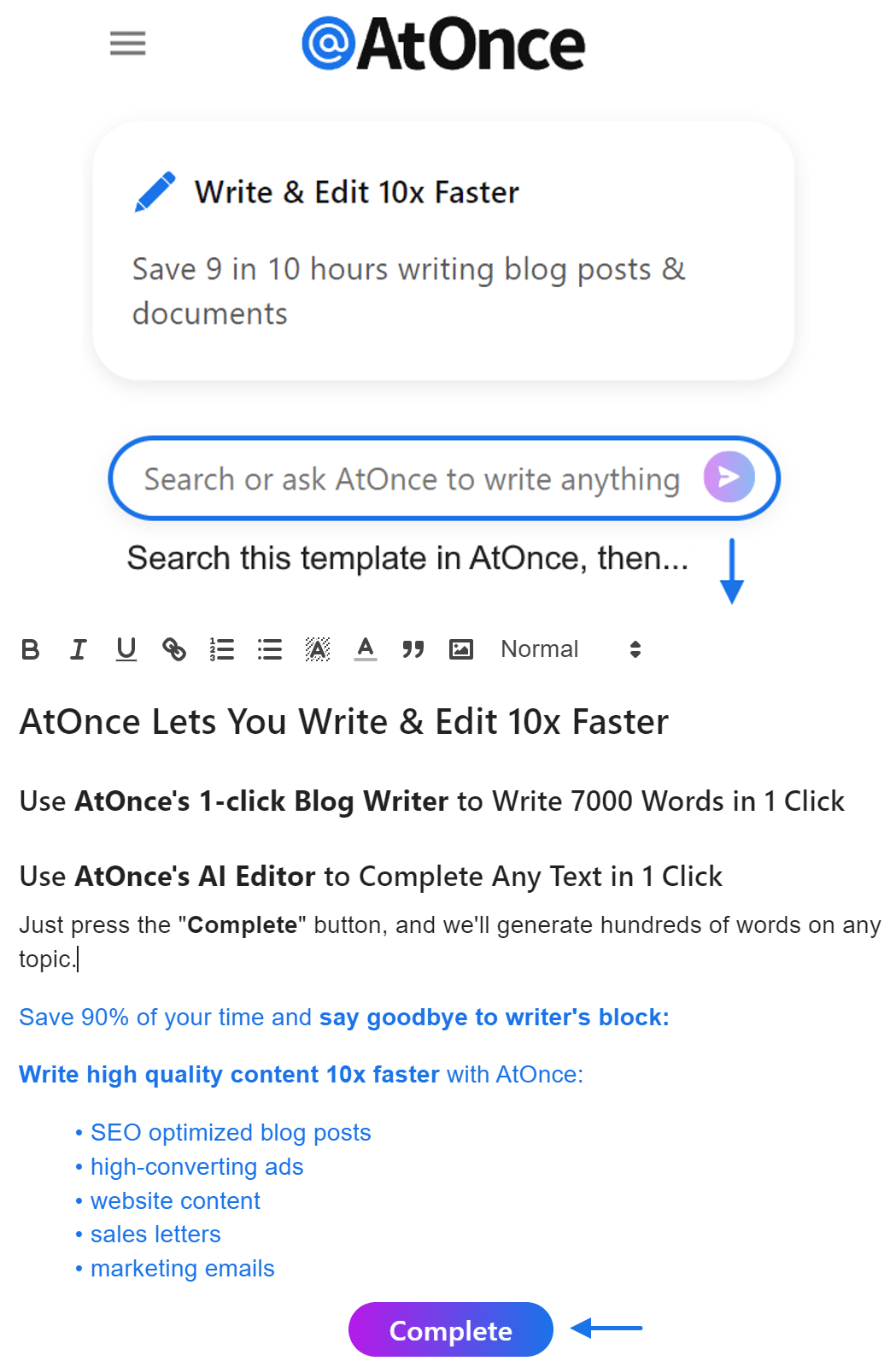
- Performing keyword research to identify relevant and high-volume keywords.
- Creating high-quality, informative content that addresses user queries.
- Optimizing on-page elements such as meta tags, headings, and URLs.
- Building high-quality backlinks from reputable websites.
- Improving website loading speed and mobile responsiveness.
2. Bounce Rate
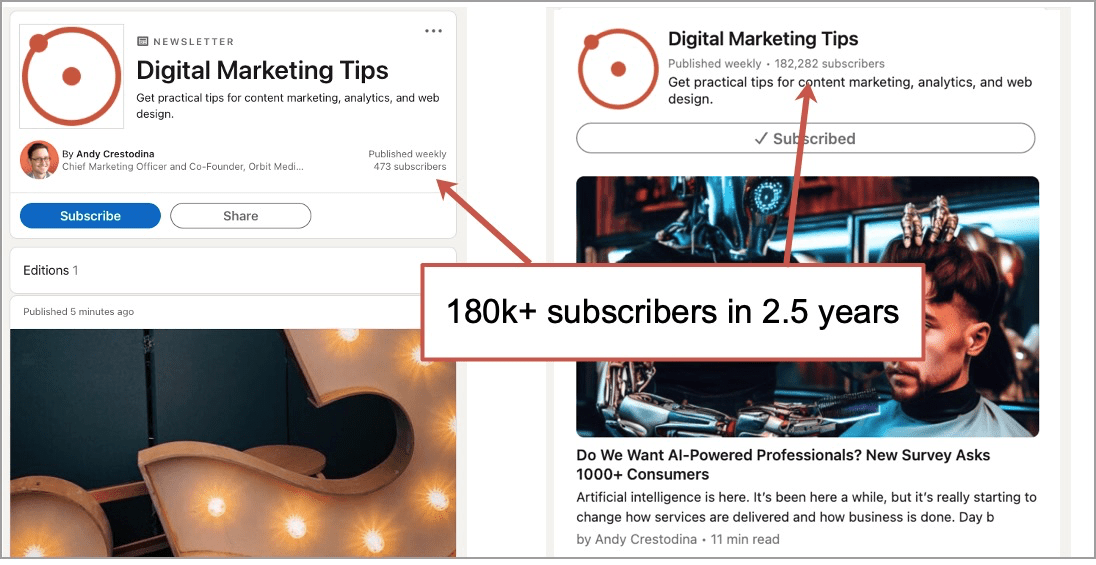
Bounce rate measures the percentage of visitors who leave your website after viewing only one page.
A high bounce rate indicates that visitors are not finding your content engaging or relevant.
It can be a sign of poor user experience, irrelevant content, or slow loading times.
By monitoring bounce rate, you can identify areas for improvement and make necessary adjustments to keep visitors engaged and encourage them to explore more of your website.
How to Reduce Bounce Rate:
To reduce bounce rate, consider implementing the following strategies:
- Create compelling headlines and meta descriptions that accurately reflect your content.
- Improve website loading speed to ensure a smooth user experience.
- Make your content easy to read and navigate with clear headings and subheadings.
- Include relevant internal links to encourage visitors to explore more pages.
- Ensure your website is mobile-friendly and responsive.
3. Time on Page

Time on page measures the average amount of time visitors spend on a specific page of your website.
It indicates how engaging and valuable your content is to your audience.
By analyzing time on page, you can determine which pages are performing well and which ones may need improvement.
This metric can help you identify content that resonates with your audience and optimize your strategies accordingly.
How to Increase Time on Page:
To increase time on page, consider implementing the following tactics:
- Create in-depth, informative content that provides value to your audience.
- Include engaging visuals such as images, videos, and infographics.
- Break up your content into easily digestible sections with clear headings.
- Include relevant internal links to encourage visitors to explore more of your website.
- Optimize your website for fast loading times to enhance user experience.
4. Conversion Rate

Conversion rate measures the percentage of visitors who take a desired action on your website, such as making a purchase, filling out a form, or subscribing to a newsletter.
It is a critical metric for assessing the effectiveness of your content marketing strategies in driving desired outcomes.
By tracking conversion rate, you can identify areas for improvement and optimize your content to better align with your conversion goals.
How to Improve Conversion Rate:
To improve conversion rate, consider implementing the following strategies:
- Create compelling and persuasive calls-to-action (CTAs) that clearly communicate the desired action.
- Optimize landing pages to align with specific conversion goals.
- Use social proof, such as customer testimonials and reviews, to build trust.
- Streamline the conversion process by minimizing form fields and simplifying checkout processes.
- Personalize your content to cater to the unique needs and preferences of your target audience.
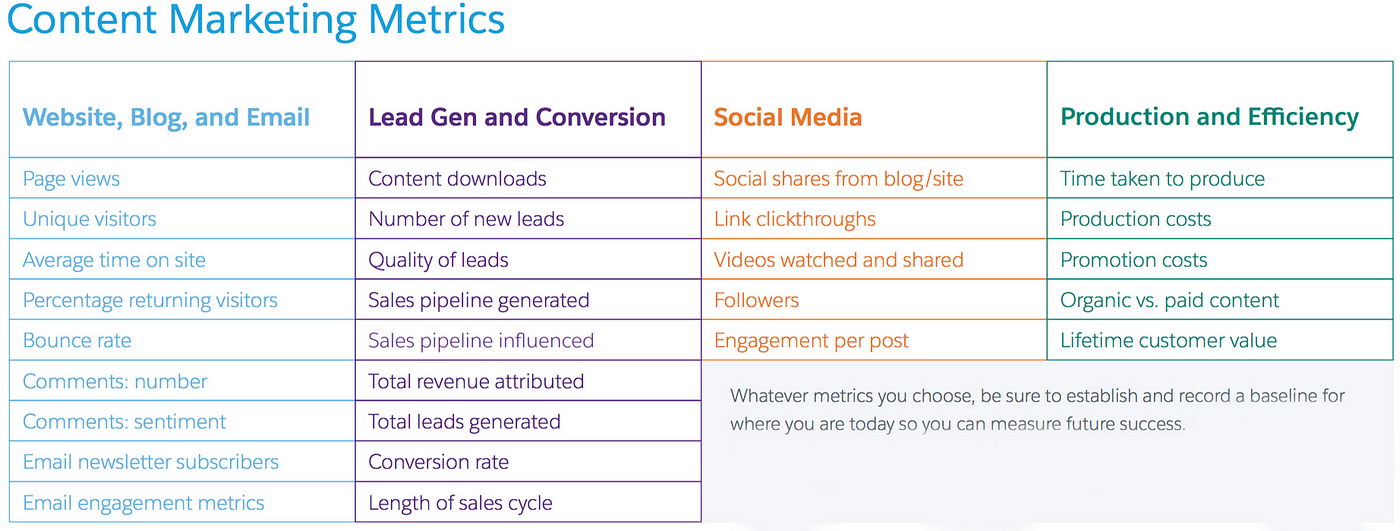
Social media engagement measures the level of interaction and involvement your content receives on social media platforms.
It includes metrics such as likes, shares, comments, and mentions.
By tracking social media engagement, you can gauge the effectiveness of your content in capturing the attention and interest of your target audience.
This metric can help you identify popular content topics and formats, allowing you to tailor your future content to better resonate with your social media followers.
How to Increase Social Media Engagement:
To increase social media engagement, consider implementing the following tactics:
- Create visually appealing and shareable content, such as infographics and videos.
- Encourage social sharing by including social sharing buttons on your website and blog posts.
- Engage with your audience by responding to comments and messages promptly.
- Run contests or giveaways to incentivize social media participation.
- Collaborate with influencers or industry experts to expand your reach and credibility.
6. Return on Investment (ROI)
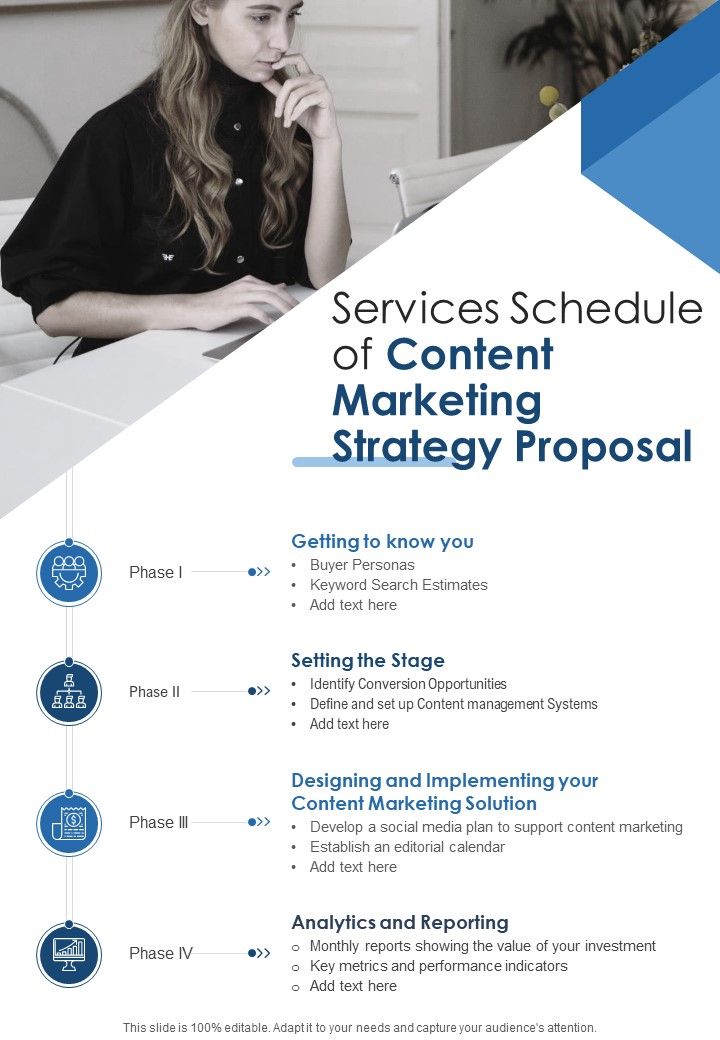
Return on investment (ROI) measures the profitability of your content marketing efforts by comparing the revenue generated against the costs incurred.
It is a crucial metric for determining the financial success of your content marketing campaigns.
By tracking ROI, you can assess the effectiveness of your strategies and make data-driven decisions to optimize your content marketing budget allocation.
How to Improve ROI:
To improve ROI, consider implementing the following strategies:
- Set clear goals and objectives for your content marketing campaigns.
- Track and analyze key performance indicators (KPIs) to measure the success of your campaigns.
- Optimize your content for search engines to increase organic traffic and conversions.
- Invest in paid advertising channels that align with your target audience and goals.
- Continuously monitor and optimize your campaigns based on data-driven insights.
7. Customer Lifetime Value (CLV)
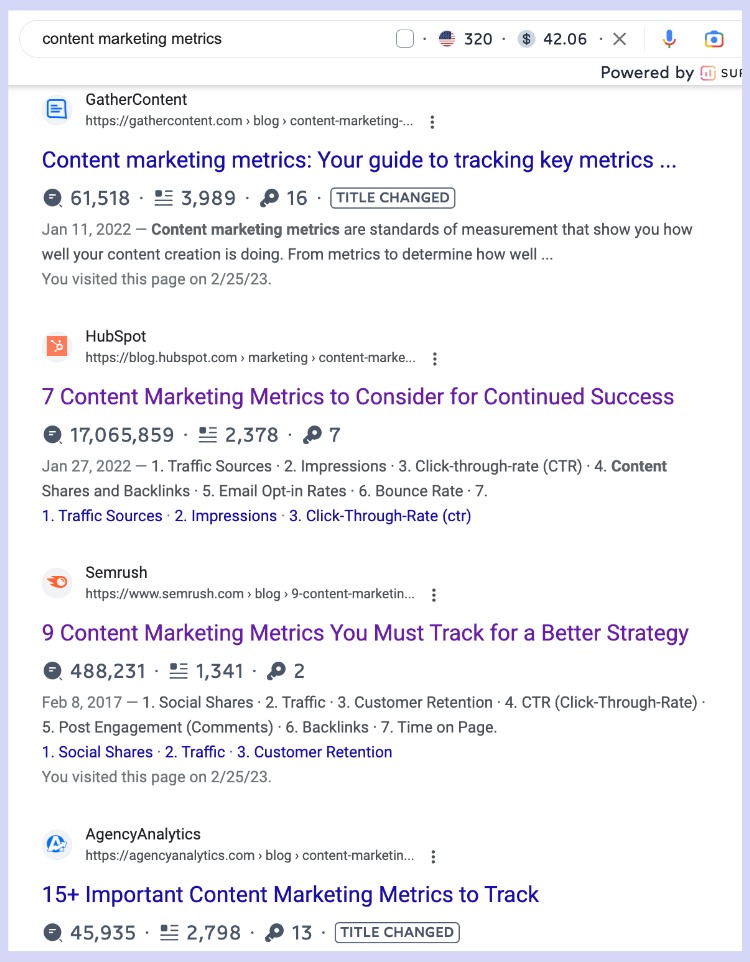
Customer lifetime value (CLV) measures the total revenue a customer generates throughout their relationship with your business.
It is a valuable metric for understanding the long-term profitability of your content marketing efforts.
By tracking CLV, you can identify high-value customers and tailor your content strategies to attract and retain similar customers in the future.
How to Increase Customer Lifetime Value:
To increase customer lifetime value, consider implementing the following tactics:
- Provide exceptional customer service to build loyalty and encourage repeat purchases.
- Create personalized content that addresses the unique needs and preferences of your customers.
- Offer exclusive discounts, rewards, or incentives to encourage customer retention.
- Implement upselling and cross-selling strategies to increase average order value.
- Regularly communicate with your customers through email marketing and personalized offers.
8. Brand Awareness
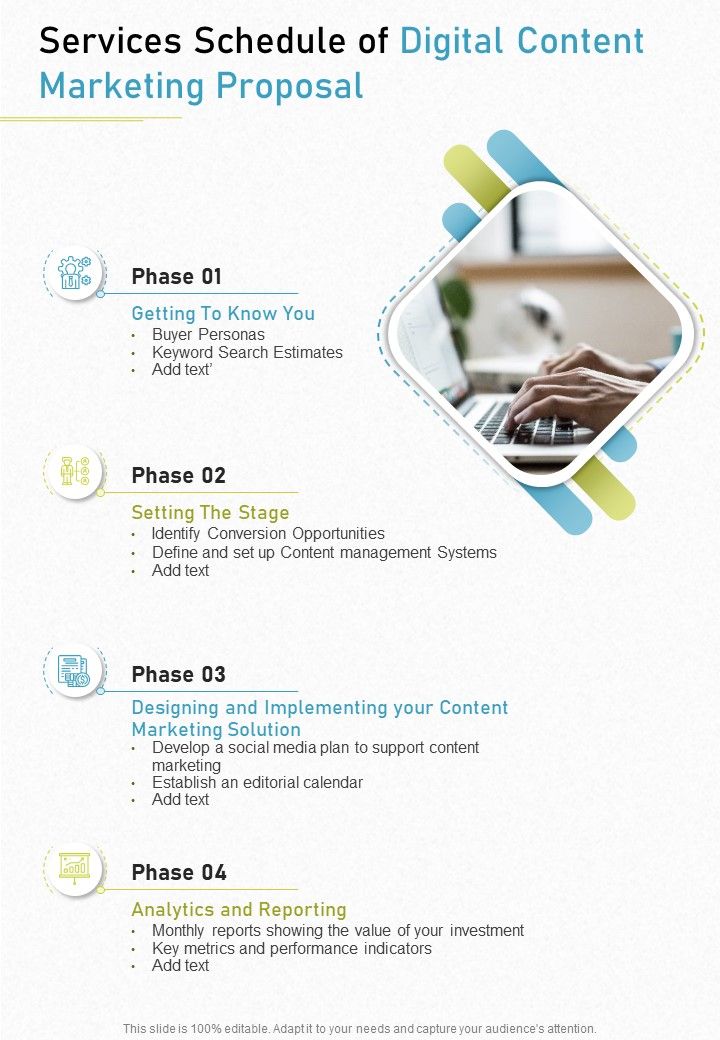
Brand awareness measures the level of familiarity and recognition your target audience has with your brand.
It is an essential metric for assessing the effectiveness of your content marketing efforts in increasing brand visibility and reach.
By tracking brand awareness, you can identify areas for improvement and adjust your content strategies to enhance brand recognition and recall.
How to Increase Brand Awareness:
To increase brand awareness, consider implementing the following strategies:
- Create consistent branding across all your content and marketing channels.
- Utilize social media platforms to engage with your target audience and share valuable content.
- Collaborate with influencers or industry experts to expand your brand's reach and credibility.
- Invest in paid advertising channels that align with your target audience and goals.
- Participate in industry events, conferences, and webinars to establish thought leadership.
9. Customer Acquisition Cost (CAC)

Customer acquisition cost (CAC) measures the average cost of acquiring a new customer.
It is an important metric for evaluating the efficiency and profitability of your content marketing strategies.
By tracking CAC, you can identify areas where you may be overspending and optimize your campaigns to acquire customers more cost-effectively.
How to Reduce Customer Acquisition Cost:
To reduce customer acquisition cost, consider implementing the following tactics:
- Optimize your content for search engines to increase organic traffic and conversions.
- Leverage social media platforms to reach and engage with your target audience organically.
- Implement referral programs to incentivize existing customers to refer new customers.
- Utilize email marketing to nurture leads and encourage conversions.
- Continuously analyze and optimize your campaigns based on data-driven insights.
10. Customer Satisfaction
Customer satisfaction measures the level of contentment and happiness your customers experience with your products or services.
It is a critical metric for assessing the effectiveness of your content marketing efforts in meeting customer expectations and building long-term relationships.
By tracking customer satisfaction, you can identify areas for improvement and make necessary adjustments to enhance the overall customer experience.
How to Improve Customer Satisfaction:
To improve customer satisfaction, consider implementing the following strategies:
- Provide exceptional customer service and support.
- Regularly collect and analyze customer feedback to identify areas for improvement.
- Create informative and helpful content that addresses common customer pain points.
- Personalize your communication and offers based on customer preferences and behavior.
- Continuously monitor and optimize your customer journey to enhance the overall experience.
Want To Get More Traffic To Your Site?
Over 15,763 SEO agencies and brands are using AtOnce to rank higher on Google.
It lets you write hundreds of articles on any topic, giving you more clicks to your site.

Get more traffic and sales — without wasting months of your time.
Click Here To Learn More
What are content marketing metrics?
Content marketing metrics are measurements used to evaluate the effectiveness and success of content marketing strategies. These metrics help businesses understand how their content is performing and make data-driven decisions to improve their marketing efforts.
Why are content marketing metrics important?
Content marketing metrics are important because they provide valuable insights into the performance of content marketing strategies. By tracking and analyzing these metrics, businesses can determine what is working and what needs improvement, optimize their content for better results, and demonstrate the ROI of their content marketing efforts.
What are some common content marketing metrics?
Some common content marketing metrics include website traffic, engagement metrics (such as time on page, bounce rate, and social shares), conversion rates, lead generation, customer acquisition cost, and return on investment (ROI). These metrics help businesses measure the reach, engagement, and impact of their content marketing campaigns.

Asim is the CEO & founder of AtOnce. After 5 years of marketing & customer service experience, he's now using Artificial Intelligence to save people time.
Read This Next
10 Essential Content Marketing Terminology Secrets for 202410 Ultimate Secrets: Content Writing Meaning Unveiled 202410 Ultimate Secrets: How to Content Marketing Success 202450 Top-Rated Blogs for SEO Content on Wix: Ultimate Guide 2024


.png)








